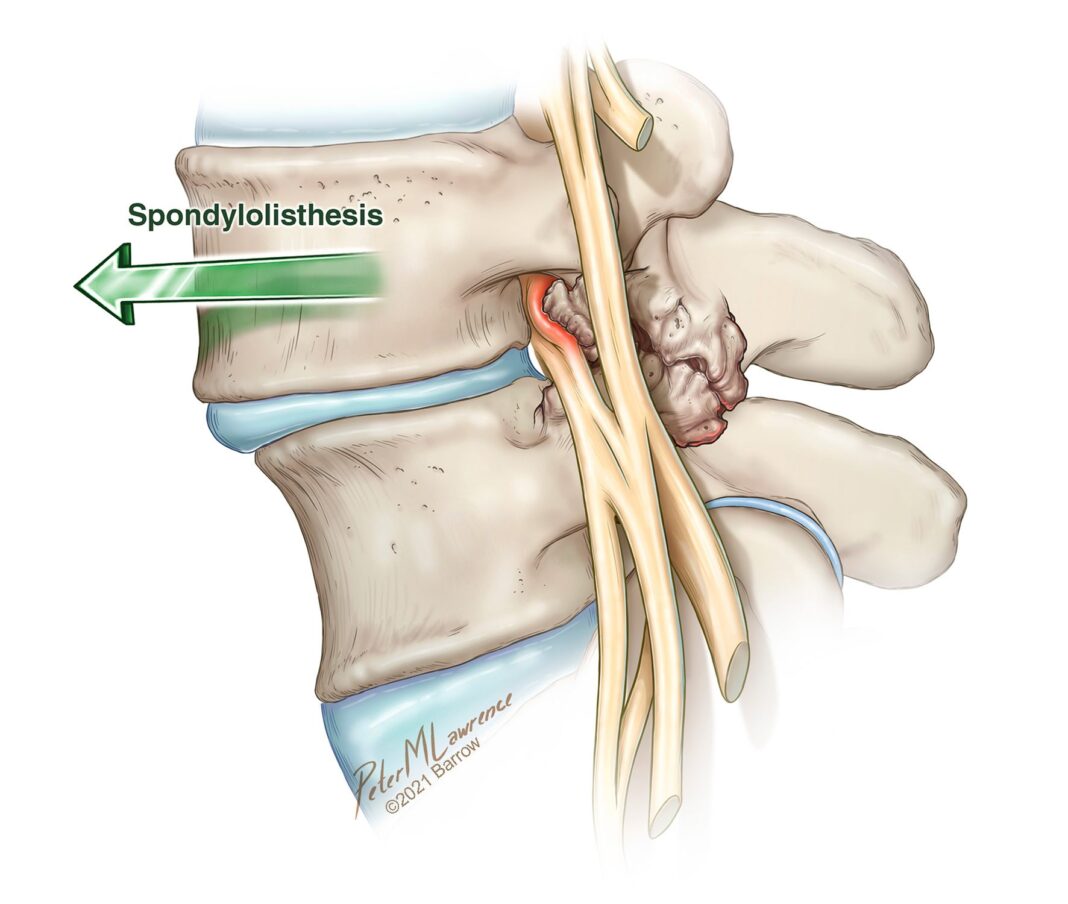Outline
- Introduction
- Brief overview
- Importance of understanding the condition
- What is Spondylolisthesis?
- Definition and explanation
- Causes
- Congenital
- Isthmic
- Degenerative
- Traumatic
- Pathological
- Symptoms
- Common symptoms
- Variations based on severity and location
- Diagnosing
- Physical examination
- Medical history review
- Imaging tests (X-rays, MRI, CT scans)
- Treatment Options
- Non-surgical treatments
- Physical therapy
- Medications
- Bracing
- Surgical treatments
- Spinal fusion
- Laminectomy
- Non-surgical treatments
- Preventing
- Maintaining a healthy spine
- Regular exercise
- Good posture
- Proper lifting techniques
- FAQs
- Conclusion
What is Spondylolisthesis?
Spondylolisthesis is a condition in which one of the vertebrae in the spine slips out of place onto the vertebra below it. This can cause significant pain and discomfort, and in severe cases, it may lead to nerve compression, resulting in additional symptoms.
Causes
There are several potential causes, including:
- Congenital Spondylolisthesis: Some individuals are born with a defect in part of their spine, which makes it easier for one vertebra to slip over another.
- Isthmic Spondylolisthesis: Often caused by a stress fracture in the vertebra.
- Degenerative Spondylolisthesis: This is due to the aging process and wear and tear on the spine.
- Traumatic Spondylolisthesis: Occurs due to a sudden injury or trauma to the spine.
- Pathological Spondylolisthesis: Results from a disease process like osteoporosis or a tumor.
Symptoms
The symptoms can vary depending on the severity and location of the slippage. Common symptoms include:
- Lower back pain
- Stiffness in the back and legs
- Muscle tightness or spasms
- Pain that radiates down the legs (sciatica)
- Weakness in the legs
- Difficulty walking or standing for long periods
Diagnosing
To diagnose spondylolisthesis, a healthcare provider will typically perform a physical examination and review the patient’s medical history. Imaging tests such as X-rays, MRI, or CT scans are often used to confirm the diagnosis and determine the extent of the vertebral slippage.
Treatment Options
Treatment for spondylolisthesis depends on the severity of the condition and the symptoms experienced. Common treatment options include:
- Non-surgical Treatments:
- Physical Therapy: Strengthening and stretching exercises can help stabilize the spine and reduce pain.
- Medications: Pain relievers and anti-inflammatory drugs can help manage symptoms.
- Bracing: Wearing a back brace can provide support and limit movement, allowing the spine to heal.
- Surgical Treatments:
- Spinal Fusion: This procedure involves fusing the slipped vertebra to the adjacent vertebra to prevent further slippage.
- Laminectomy: Removing a portion of the vertebra to relieve pressure on the nerves.
Preventing Spondylolisthesis
While not all cases can be prevented, maintaining a healthy spine through regular exercise, good posture, and proper lifting techniques can reduce the risk of developing spondylolisthesis. Strengthening the core muscles and avoiding activities that put excessive strain on the back can also be beneficial.
FAQs
Q: Can spondylolisthesis heal on its own?
A: In some cases, especially mild ones, spondylolisthesis can improve with non-surgical treatments like physical therapy and medications. However, severe cases may require surgical intervention.
Q: Is spondylolisthesis a common condition?
A: It is relatively common, particularly in athletes involved in sports that place stress on the lower back, such as gymnastics and football.
Q: Can I continue to exercise if I have spondylolisthesis?
A: It depends on the severity of your condition. Consult with your healthcare provider to develop a safe exercise plan that strengthens the back without causing further injury.
Q: What is the recovery time after surgery for spondylolisthesis?
A: Recovery time can vary, but it typically takes several months. Physical therapy is often recommended during recovery to regain strength and mobility.

